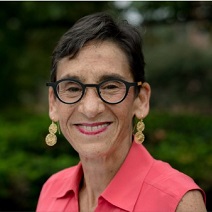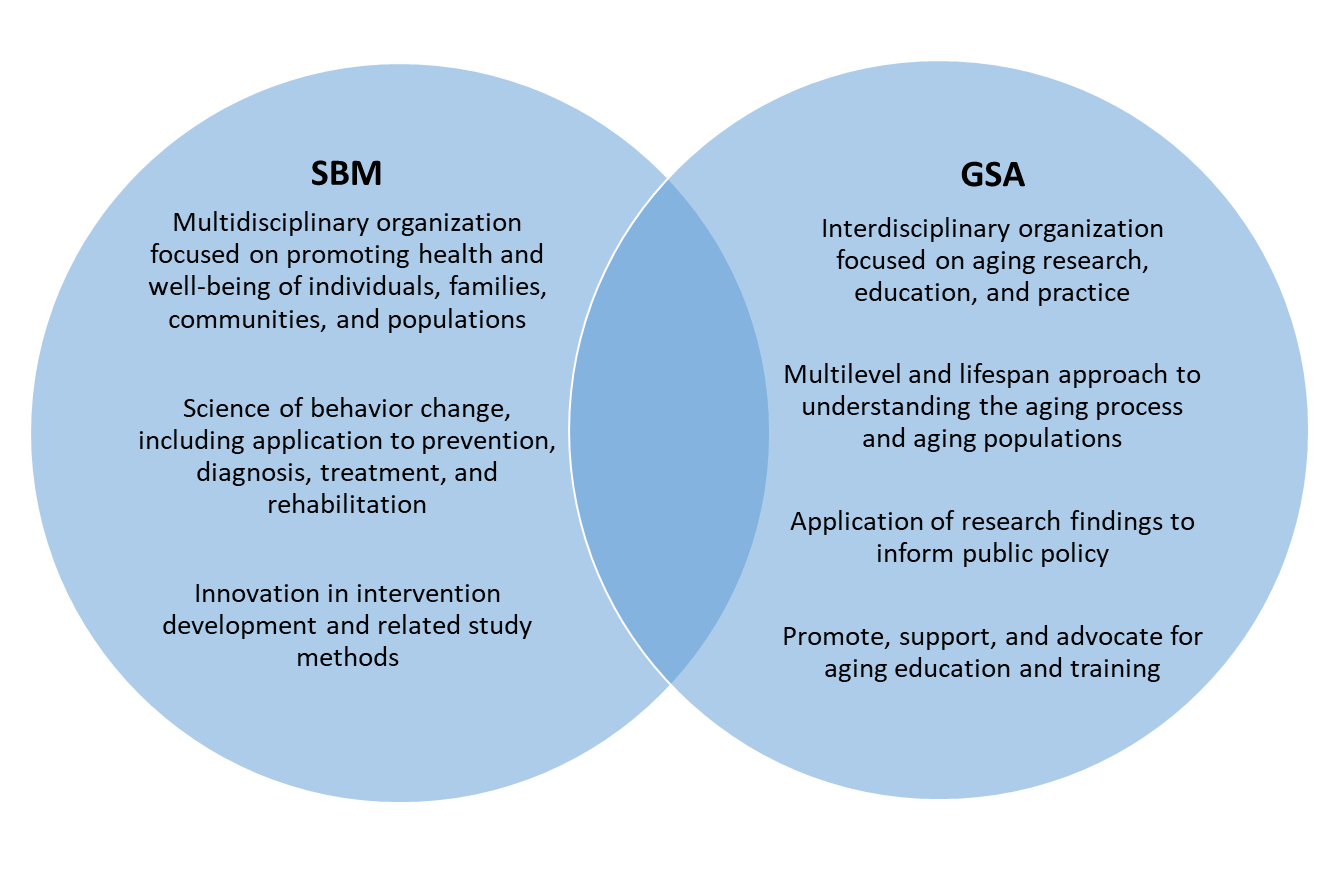
Fall 2020
Fostering Collaborations Between SBM and GSA: An Interview with Dr. Barbara Resnick
Kathi L. Heffner, PhD✉; Jaime Hughes, PhD, MPH, MSW✉; Elizabeth Orsega-Smith, PhD✉; Aging SIG

Barbara Resnick, PhD, CRNP, FAAN, FAANP
The United States population of adults aged 65 and older is expected to reach around 64 million in 10 years. Indeed, the number and proportion of older adults in virtually all segments of the population is increasing worldwide, a phenomenon known as population aging. With population aging comes compelling challenges for behavioral medicine, such as expanding the portfolio of evidence-based, effective behavioral medicine interventions to promote healthy aging, and ensuring health policies positively impact on the health, well-being, and care of older adults. Population aging also comes with incredible opportunities for behavioral medicine -- science and practice -- to benefit from the knowledge, wisdom, and experience of individuals who have lived long lives.
The Society for Behavioral Medicine (SBM) Aging Special Interest Group (SIG) is focused on addressing the unique issues of behavior change among older adults, including the influence of psychosocial, cultural, environmental, and policy factors that are particular to aging and late life. In order to advance behavioral medicine knowledge and practice that has high impact for older adults’ health, the Aging SIG has begun exploring ways in which SBM may foster collaboration with the Gerontological Society of America (GSA), a premier organizational leader in the promotion of multi- and interdisciplinary research, knowledge dissemination, and education in gerontology and aging. We suggest that the scientific and societal impact of this collaboration will come not only from the overlapping interests in ensuring the health and well-being of older adults, but the unique foci and expertise that each organization brings.
Toward this end, we have been collaborating on this initiative with long time Aging SIG member, Dr. Barbara Resnick. Dr. Resnick’s imminent gerontology and aging research and vast experience in societal leadership, serving as president of both GSA and the American Geriatrics Society, a founder and leader of the Aging SIG, and former SBM SIG Council Chair, make her well-poised to help advance collaborations between SBM and GSA. We asked Dr. Resnick to share her thoughts and vision for how our societies can work together to foster shared missions.
What is the history of collaborations between GSA and SBM?
For many years, SBM and GSA have each had members from both societies who have participated in the other organization’s annual meeting. A formal relationship was explored several years ago, initiated by the work of Dr. Sherri Sheinfeld Gorin, in her former role as Scientific and Professional Liaison Council Chair. This exploration was based on interest on the part of both organizations to expand the critically important focus on aging in SBM, and, in GSA, the methods and activities related to behavior change.
When, and how, did collaboration between the two organizations start? What type of conversations and activities has this partnership resulted in?
Conversations were initiated between leadership from both organizations to see what types of activities could be done that would be advantageous to both organizations. One of our first goals was the development of a Policy Brief through GSA that addressed the Medicare Annual Wellness Visit. This was completed and published and disseminated through GSA and SBM channels. We have continued to discuss opportunities including such things as joint symposia at GSA and SBM annual meetings, informal Meet and Greet sessions, and webinars throughout the calendar year. We also decided to share things like conference information and webinar options, as well as other resources from each organization. This information sharing is a good launching point at this time to reinvigorate this collaboration. GSA Connect, SBM Outlook, and SIG listservs can all serve as platforms for ongoing information sharing. A primary short-term goal should be to increase awareness of each society, particularly to potential members who do not currently belong to both organizations.
What do you believe are some potential benefits of partnering/collaborations between both of these professional organizations?
A major benefit of partnering is increasing opportunities for members from either organization to learn more about the other organization, and hopefully join and expand their knowledge in the areas specific to both groups. GSA brings to the table a focus on gerontological, geriatric, and aging-related research, policy, and practice. SBM covers the full lifespan but has a primary focus on the science of behavior change, including a multitude of behaviors and methods around behavior change. There is crossover and learning to be had on both sides.
Who are some of the key stakeholders in each organization who can assist with developing the collaboration?
Initially, the partnership should be supported by the executive directors of the organizations and the boards. There are no cost implications, generally, and thus it is a win-win for both groups.
How can these two groups collaborate in the future?
A good path is continued work aimed at sharing opportunities within each organization to the others’ members, and enticing new membership across the groups. In 2019, the SBM Aging SIG hosted an affiliate event at the GSA Annual Meeting to showcase the research being conducted by investigators who are members of both organizations. This is a good way to get the word out to GSA members who may be conducting behavioral medicine research with older adults, but are not aware of the scientific collaboration and networking benefits available with SBM membership. Similar events could be integrated into the SBM Annual Meeting to share the benefits of GSA membership with SBM researchers whose work naturally involves older adults.
I would say that the biggest barrier raised by all in terms of interest is the cost for multiple memberships. Future work might focus on developing a combined membership or reduced membership cost for one if you belong to the other, or reduced conference fees for members of the other organization. In general, strategic planning that can optimize the value of membership for all can greatly benefit both organizations.
What advice do you have for other SIGs who might be interested in collaborating with another scientific society or professional organization?
Begin with information sharing and other low-hanging fruit, like collaborative webinars and symposia that can be advertised jointly. I think that this process of information sharing and collaborative activities works well. It is not burdensome in any way. It is difficult to really evaluate the outcomes for SBM and GSA at this time, but I believe it has raised some awareness across the organizations that the other one exists.
For more information about the Gerontological Society of America, please go to: https://www.geron.org/